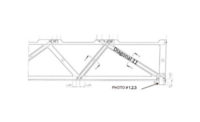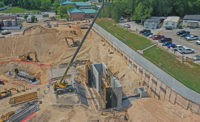
A company founded by a former electrical subcontractor is successfully franchising a service to integrate digital photos with construction documents to create indexed, interactive construction databases.
Multivista, Vancouver, British Columbia, sends photographers to capture project details in high-resolution images using high-end cameras and wide-angle lenses that can frame large areas in each shot. The images are then indexed to plans and uploaded to a secure internet-based system for project team access.
The company is the brainchild of Luis Pascual, CEO. According to David Stadnik, the company's chief operating officer, in 2003, Pascual had become frustrated that, once his electrical work was covered, there was no easy way to show what his firm had done if questions arose. So Pascual approached Graham Twigg, a metallurgical engineer and computer programmer—and now Multivista's chief technical officer—with the idea of creating an easily accessible system to index photographic documentation of work with the construction plans.
Today, the firm pitches the system as a way to minimize and properly designate liability. A marketing video on its website describes the case of a Phoenix-area contractor and project owner who were hit with a $96,000 bill from the city for damage to nearby streets and sidewalks. Within 24 hours, the contractor and owner were able to use their photos to prove the damage predated the project's start.
Richard L. Andrews, a consultant with Zurich Services Corp., Blaine, Wash., has been recommending Multivista to his clients since he first saw the system in 2005. He says the quality of the photos and the easy access to the images are the system's strong points.
“Multivista's technicians really know how to take photographs,” Andrews says, adding that the archiving of images on several secure servers provides data security. “To my knowledge, they are the only company that provides this level of sophistication in construction photography.”
Stadnik describes the service as “an entirely new subcontractor trade.”
Franchisers research potential projects, get involved with contractors or owners in the preconstruction stage and integrate their services with the rest of the team. Photographers visit sites regularly and shoot pre-identified “hot spots” repeatedly, coordinating according to the scheduled project milestones determined early on with the contractors and designers.
The firm started expanding into the U.S. in 2008. Today, it has 30 franchise owners in more than 40 metropolitan areas—Philadelphia and Milwaukee are the latest franchises. In 2010, its photographers documented more than 2,000 projects, representing more than 140 million sq ft of construction.
The company's client makeup has changed notably in the last 12 to 18 months, says Stadnik, shifting from an owner/contractor ratio of about 50/50 to about 80/20 today. Stadnik says the construction downturn may be the cause. The company's top-two market sectors are education and government, which collectively made up more than half its 2010 business.
Stadnik says the cost for the service ranges from 20 cents to 50 cents per sq ft, depending upon complexity, or $20,000 to $50,000 for a 100,000-sq-ft project.





